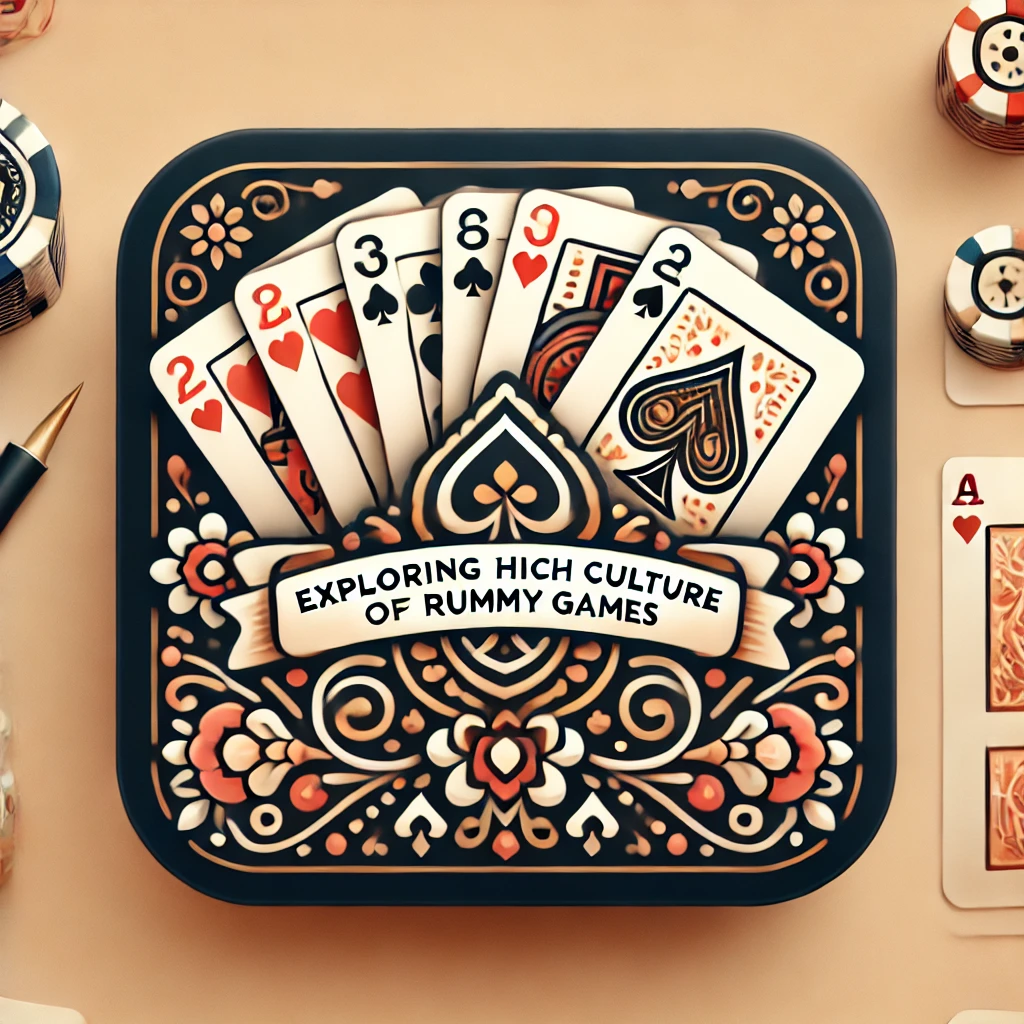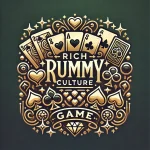The Complete History of Rummy Games The history of rummy games spans back to the early 1800s and is full of legends. Although the exact origins of rummy are unknown, some theories contend that it may have developed from earlier card games like Conquian, which is thought to have originated in Mexico. Conquian is frequently regarded as the forerunner of contemporary rummy due to its many structural and gameplay parallels. Rummy started to become well-liked in the US by the middle of the 19th century, & it was changed & adapted into many different variations there. The game swiftly established itself as a mainstay in American homes, frequently being played at family get-togethers and social events.
Rummy transformed in many ways as it spread around the world, giving rise to unique variations that suited various cultural tastes. By the late 19th & early 20th centuries, rummy had become a popular game in many nations, including India, where it was dubbed “Indian Rummy.”. The combination of skill and chance in the game makes it appealing to players of all ages and skill levels.
In addition to being a well-liked card game, rummy has grown to be an important social interaction tool, frequently providing a means of amusement & camaraderie for friends & family. There are many different variations of rummy to suit a variety of tastes and preferences, so it’s not a single game. One of the most well-liked variations is Gin Rummy, which dates back to the early 1900s and is distinguished by its deep strategy & quick-paced gameplay.
While attempting to reduce the number of points in their hands, players in Gin Rummy try to form runs and sets of cards. This version has become very popular in North America & is frequently played in competitive or informal settings. Indian Rummy, which usually uses two decks of cards and requires players to create legitimate sets & sequences, is another well-known variation. With its own set of guidelines that set it apart from other versions, this version is especially well-liked in India.
Other variants include Canasta, which adds strategy and teamwork components, and Kalooki, which adds extra complexity with wild cards and unique scoring schemes. The game has a distinct flavor from each variation, so players can select the one that most closely matches their preferences. Also, these games are available to a worldwide audience through digital versions offered by online platforms. Whether a player wants a quick game or a more strategic challenge, the variety of rummy not only increases its appeal but also guarantees that they can find a version that suits their tastes. Games like rummy are very important to many cultures all over the world.
Playing rummy is a way to socialize and strengthen community ties in many cultures, making it more than just a recreational activity. In India, for example, rummy is frequently played at family get-togethers and festivals as a symbol of celebration and unity. Because the game is age-neutral, grandparents and grandchildren can participate in a shared activity that promotes communication and connection. The way rummy is incorporated into social norms, frequently with traditional snacks and drinks that add to the whole experience, reflects this cultural significance. Rummy has also been adopted by many communities as a means of conserving cultural heritage.
Local rummy variations in some areas include storytelling components or traditional themes that represent the community’s history and values. Players learn about their cultural origins while also being entertained by this feature of rummy. As a result, rummy games act as a link between generations, enabling more experienced players to impart wisdom and customs while younger players offer new insights. Rummy’s cultural fabric is enhanced by this dynamic interaction, which makes it a timeless representation of interpersonal communication in a variety of cultures.
Rummy games’ widespread popularity & versatility are demonstrated by their global reach. Gin Rummy has gained popularity in North America and is frequently played in social situations or at family get-togethers. Its simple rules allow novices to play while still providing experienced players with depth.
Conquian and other variants are still very popular in Latin America, demonstrating the game’s longstanding ties to the region. Rummy’s global landscape is further enhanced by the cultural quirks connected to these games, which mirror regional customs and social behaviors. Rummy has evolved into distinctive forms that are in line with regional traditions throughout Asia, especially in India and the Philippines. Two decks of cards are used in Indian Rummy, which frequently incorporates intricate strategies that call for players to plan multiple moves in advance.
In contrast, Filipino Rummy is a well-liked option for social gatherings since it combines aspects of competition and teamwork. These regional variations show how rummy can change without sacrificing its fundamental ideas of forming runs & sets. Rummy is still a popular game in many parts of the world as players continue to embrace it in its many variations. One cannot stress how important rummy games are for fostering social interaction between friends and family.
Played at home or in public places like cafes or community centers, rummy promotes friendly competition and camaraderie. Players can connect over common experiences thanks to the game’s structure, which promotes dialogue & laughter. This social component is especially noticeable during festive events or family get-togethers, when rummy serves as a hub for amusement and camaraderie. Also, playing rummy games can be a means of fostering social bonds & establishing relationships in addition to being a form of entertainment. Playing rummy is viewed in many cultures as a way to interact more deeply with people.
Players foster a supportive & understanding environment by sharing strategies, rejoicing in wins, and consoling one another after defeats. Playing rummy with others not only makes the game more enjoyable, but it also strengthens lifelong social ties. Rummy has developed from a recreational activity to a competitive sport with global tournaments.
Players from different backgrounds gather to demonstrate their abilities and tactics in high-stakes settings at these competitions. From neighborhood gatherings at community centers to global tournaments with elite athletes competing for coveted titles and monetary awards, tournaments can take many forms. These events’ competitive structure gives the game an exciting new dimension and transforms it from a lighthearted hobby into a serious sport.
Rummy tournament participation demands not only skill but also mental dexterity and strategic thinking. In addition to successfully controlling their own hands, players must be skilled at reading the moves of their opponents. Intense gameplay where every choice matters is frequently the result of competitive pressure. In order to hone their skills and raise their chances of winning in tournaments, many players consequently devote a substantial amount of time to practice and study. Players who are passionate about the game and push one another to succeed are more bonded by this competitive spirit.
Rummy games have had a lasting impact on literature and art throughout history. Innumerable pieces in a variety of media have been influenced by the game’s themes of strategy, luck, and interpersonal interaction. The intricacies of life are frequently symbolized by rummy in literature, emphasizing how people negotiate relationships and make decisions in the face of uncertainty. Intense rummy matches between characters can be used in novels to delve deeper into themes like friendship, betrayal, and trust.
The visual arts have depicted rummy in paintings and illustrations that encapsulate the spirit of card-game-centered social gatherings. Scenes with vivid colors and lively facial expressions that capture the thrill and tension of gameplay are frequently portrayed by artists. In addition to reflecting cultural customs, these artistic representations offer insights into how people behave in social settings. Because of this, rummy becomes more than just a game; it serves as a catalyst for artistic expression in a variety of fields. The future of rummy games seems bright, as technological developments continue to influence how they are played and enjoyed.
By enabling players from all over the world to virtually connect, online platforms have completely changed how people can access rummy. In addition to bringing cutting-edge features like live tournaments & interactive tutorials, this digital revolution has made it simpler for enthusiasts to interact with one another across geographic boundaries. The popularity of rummy is expected to keep rising in this digital environment as more people look to online gaming for entertainment. Also, there are exciting opportunities to improve gameplay experiences through the incorporation of artificial intelligence (AI) into online rummy platforms. AI can facilitate matchmaking based on skill levels and give players tailored feedback based on their performance.
By enabling players to interact with one another through shared online experiences, this technological advancement not only improves individual gameplay but also cultivates a sense of community. Rummy’s future is bright, offering new chances for interaction, competition, and enjoyment for future generations as it continues to adjust to shifting social trends and technological developments.





